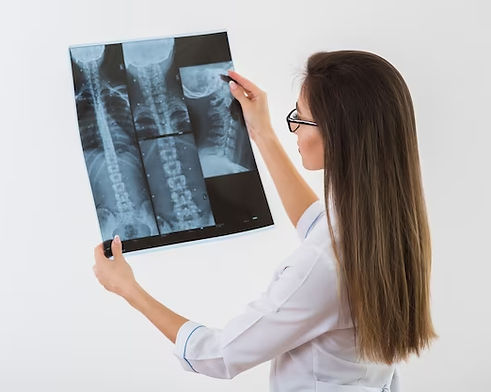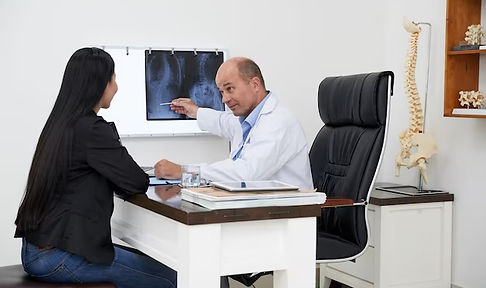
5 Components Of the Gonstead
Technique
Why make a decision concerning someone’s health with anything less than ALL of the available information? Every patient deserves to have correlated analysis in their clinical picture to ensure the highest level of chiropractic care in Fairlight NSW. This will ensure specificity and ultimately patient confidence in the doctor’s ability with care.
Not one thing is certain which is why we use Visualization, Instrumentation, Palpation, X-Ray, and patient symptoms to determine the exact spot that we need to adjust a patient. When all of these correlate we are more likely to give the patient a specific adjustment. The greater the specificity, the greater the change we will notice in the patient’s health. Dr. Gonstead noted that three adjustments on the wrong vertebral segment could cause a Subluxation; therefore it is extremely important to be as specific as possible.

In the Gonstead System are Full Spine, both A-P and Lateral views. The film size is 14” x 36” with the patient placed to include ishia to occiput. Full Spine films use less radiation than sectionals, provide an accurate vertebral count, provide full spinal contour representation for posture analysis with axial weight-bearing, and show problems other than the chief complaint—all of which are not attainable through the use of sectional films. Full spine X-Rays are essential to Gonstead Chiropractic. They allow us to regard the patient totally in analysis and corrective procedures.
Both Static and Motion Palpation are utilized in Gonstead Chiropractic to precisely pinpoint areas of involvement. Static Palpation is the “hands on” part of the examination. This will indicate changes in contour, tone, texture, and temperature on the patient. Motion Palpation is used to determine a subluxation and its listing.
Both Static and Motion Palpation are utilized in Gonstead Chiropractic to precisely pinpoint areas of involvement. Static Palpation is the “hands on” part of the examination. This will indicate changes in contour, tone, texture, and temperature on the patient. Motion Palpation is used to determine a subluxation and its listing.
We take into account all the information we can get from the patient by simply looking at them very carefully. In the Gonstead System Visualization starts from the moment the patient walks in the door. Differences in height between the ears, shoulders, and hips as well as posture and gait are useful to confirm your X-Ray and Palpation findings.
Although never used in a “cookbook” fashion, understanding problems with a patient’s health help us determine the area that a patient needs to be adjusted. Symptoms can help separate the two parts of the Autonomic Nervous System (Sympathetic and Parasympathetic) and aid us in applying a specific adjustment
In the Gonstead System, we apply all the information from these modes of analysis and correlate our findings to determine the most likely cause of the patient’s problem. After Subluxations are found, the use of the proper Gonstead technique is applied to effectively correct problem areas.
The Gonstead System focuses on the dynamics of intervertebral disc as the underlying cause of subluxations and resulting neurological dysfunction. It could then be said that Gonstead doctors are “disc doctors”.





.jpg)


